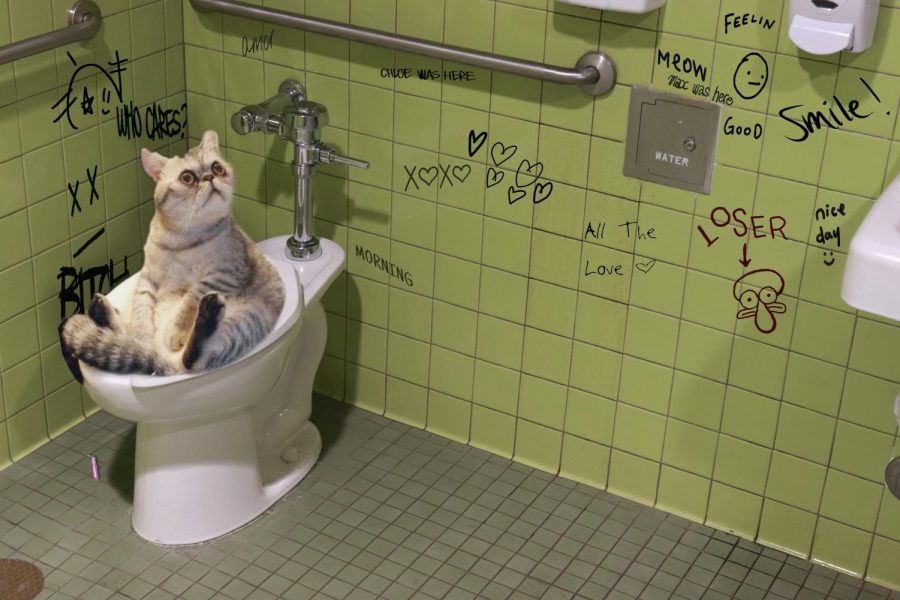Reasons Flushing Cat Poop Down Your Toilet Isn't a Good Idea - Advice for Proper Handling
Reasons Flushing Cat Poop Down Your Toilet Isn't a Good Idea - Advice for Proper Handling
Blog Article
Every person will have their own unique way of thinking when it comes to How to Dispose of Cat Poop and Litter Without Plastic Bags.
:max_bytes(150000):strip_icc()/0S1A1090-49a8e2c66f8e41d6901f2559787a7f24.jpg)
Introduction
As cat owners, it's essential to be mindful of just how we throw away our feline buddies' waste. While it might seem practical to purge feline poop down the toilet, this method can have detrimental repercussions for both the setting and human health and wellness.
Alternatives to Flushing
The good news is, there are safer and much more accountable methods to dispose of feline poop. Take into consideration the adhering to options:
1. Scoop and Dispose in Trash
The most common approach of disposing of feline poop is to scoop it into an eco-friendly bag and toss it in the garbage. Be sure to use a specialized trash inside story and deal with the waste quickly.
2. Usage Biodegradable Litter
Go with naturally degradable feline clutter made from materials such as corn or wheat. These litters are eco-friendly and can be safely taken care of in the trash.
3. Bury in the Yard
If you have a backyard, take into consideration hiding pet cat waste in an assigned location far from veggie yards and water resources. Be sure to dig deep enough to prevent contamination of groundwater.
4. Set Up a Pet Waste Disposal System
Invest in an animal garbage disposal system specifically made for cat waste. These systems make use of enzymes to break down the waste, lowering smell and environmental influence.
Health Risks
In addition to ecological problems, purging feline waste can also pose wellness dangers to people. Cat feces might include Toxoplasma gondii, a parasite that can create toxoplasmosis-- a potentially severe ailment, especially for pregnant ladies and individuals with damaged immune systems.
Ecological Impact
Flushing feline poop presents unsafe pathogens and bloodsuckers into the water, posing a considerable threat to aquatic ecological communities. These contaminants can negatively influence aquatic life and compromise water top quality.
Conclusion
Accountable family pet possession expands past providing food and shelter-- it also involves proper waste monitoring. By avoiding purging cat poop down the toilet and opting for alternative disposal methods, we can reduce our environmental footprint and safeguard human health.
Why Can’t I Flush Cat Poop?
It Spreads a Parasite
Cats are frequently infected with a parasite called toxoplasma gondii. The parasite causes an infection called toxoplasmosis. It is usually harmless to cats. The parasite only uses cat poop as a host for its eggs. Otherwise, the cat’s immune system usually keeps the infection at low enough levels to maintain its own health. But it does not stop the develop of eggs. These eggs are tiny and surprisingly tough. They may survive for a year before they begin to grow. But that’s the problem.
Our wastewater system is not designed to deal with toxoplasmosis eggs. Instead, most eggs will flush from your toilet into sewers and wastewater management plants. After the sewage is treated for many other harmful things in it, it is typically released into local rivers, lakes, or oceans. Here, the toxoplasmosis eggs can find new hosts, including starfish, crabs, otters, and many other wildlife. For many, this is a significant risk to their health. Toxoplasmosis can also end up infecting water sources that are important for agriculture, which means our deer, pigs, and sheep can get infected too.
Is There Risk to Humans?
There can be a risk to human life from flushing cat poop down the toilet. If you do so, the parasites from your cat’s poop can end up in shellfish, game animals, or livestock. If this meat is then served raw or undercooked, the people who eat it can get sick.
In fact, according to the CDC, 40 million people in the United States are infected with toxoplasma gondii. They get it from exposure to infected seafood, or from some kind of cat poop contamination, like drinking from a stream that is contaminated or touching anything that has come into contact with cat poop. That includes just cleaning a cat litter box.
Most people who get infected with these parasites will not develop any symptoms. However, for pregnant women or for those with compromised immune systems, the parasite can cause severe health problems.
How to Handle Cat Poop
The best way to handle cat poop is actually to clean the box more often. The eggs that the parasite sheds will not become active until one to five days after the cat poops. That means that if you clean daily, you’re much less likely to come into direct contact with infectious eggs.
That said, always dispose of cat poop in the garbage and not down the toilet. Wash your hands before and after you clean the litter box, and bring the bag of poop right outside to your garbage bins.
https://trenchlesssolutionsusa.com/why-cant-i-flush-cat-poop/

We were shown that report on How to Dispose of Cat Poop and Litter Without Plastic Bags from a friend on another site. Loved our write-up? Please share it. Let another person locate it. Thank you so much for going through it.
Call Today Report this page